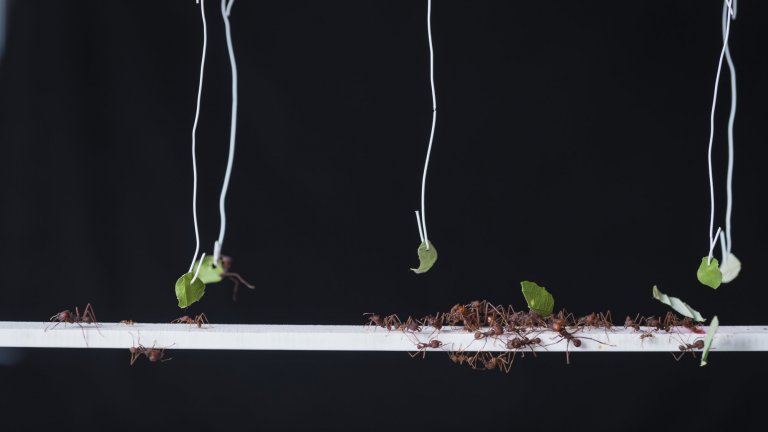
© Cyril Frésillon / CRCA / CNRS Photothèque
View the mediaFolder
At the individual level as at species level, living beings are interconnected with each other and their environment. These interactions, sources of both mutual aid and competition, are the origin of life and its evolution.

© Cyril Frésillon / CRCA / CNRS Photothèque
View the mediaEvery living organism evolves in an environment in which it interacts and exchanges. Consequently, the non-living environment has an impact on the living organisms in it. It can affect individuals’ way and quality of life, but also, over longer timescales, the evolution of species, which develop new capacities conducive to their survival. Various research projects are also assessing the impact of anthropogenic activities (due to human activities) on a range of organisms, in order to develop solutions to restore and protect environments and endangered species. Conversely, living beings have an impact on the environment they inhabit, and they are the focus of research, for example on phytoremediation, which is based on the use of plants to “naturally” clean up contaminated water and soil.
Finally, living beings also interact with each other. Individuals within the same species can interact closely, sometime to the point of forming superorganisms, such as the social spider, Aelosimus eximius, where thousands of individuals are able to synchronise their movements to capture prey. Interactions between different species can also be favourable to one or both of them. This is true of the symbiosis between the leafcutter ants, Atta, and the fungus, Leucoagaricus gongylophorus: the ants cultivate the fungus and then feed off it. In other cases, exchanges between species can be harmful to one or several of the species involved, for example parasitism. Exchanges between organisms can even take place within the organisms themselves, as can be seen in intestinal microbiota, a group of micro-organisms essential to our digestive system.
These pictures are an overview of organism-environment interactions identified and used in laboratories.
Key words: ecology, ethology, biological interaction, parasitism, symbiosis, evolution, anthropogenic impact, environmental protection, biodiversity
Our work is guided by the way scientists question the world around them and we translate their research into images to help people to understand the world better and to awaken their curiosity and wonderment.